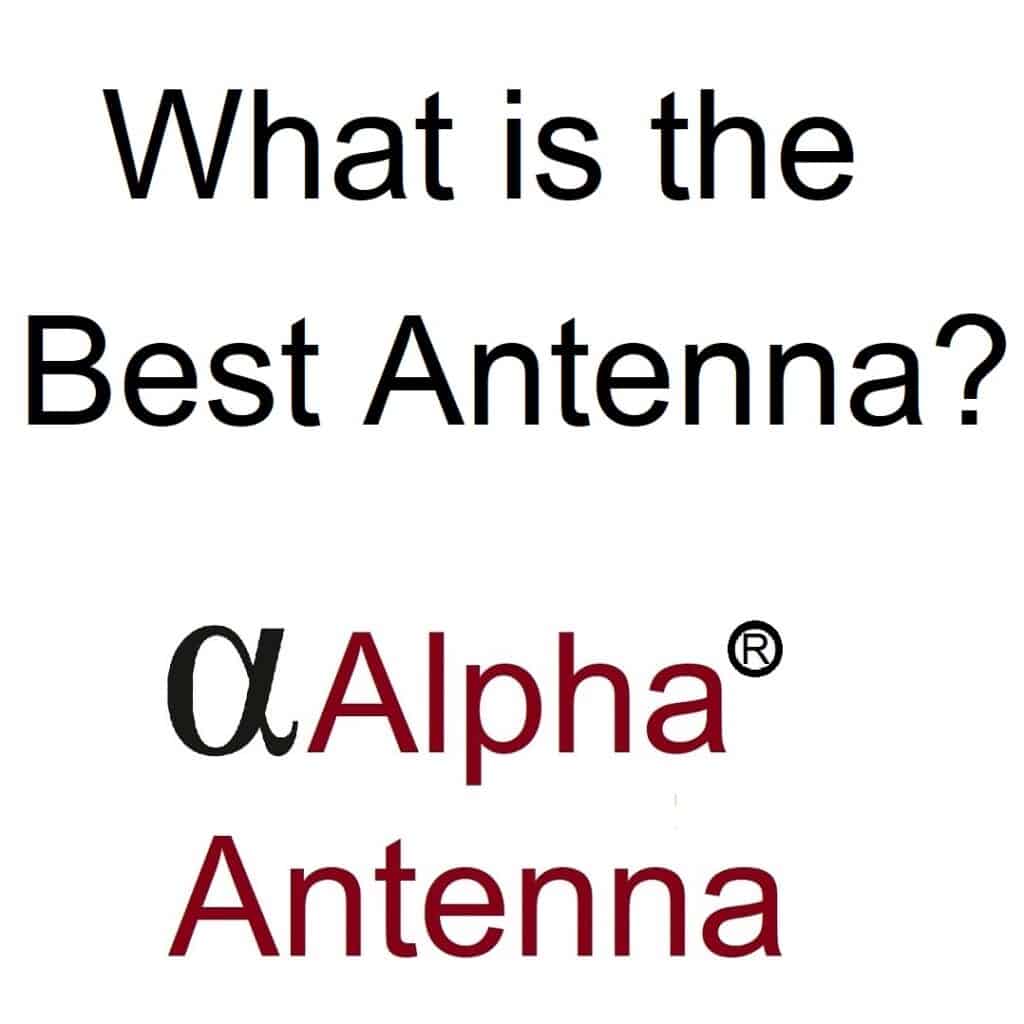When considering what antenna is best, ask yourself;
What do you want to do with the antenna?
Basically, different antennas for different objectives. There are essentially four different communications objectives: ground wave, NVIS, DX, and terrestrial. Depending upon your mission, you will want to choose the antenna that best suits one of these four objectives.
Frequency Used
The frequency that you use, for example HF VHF or UHF, will have unique properties to fulfill a mission objective. Terrestrial or satellite communications most often used VHF or UHF frequencies. Ground wave communications can use any one of the three, HF VHF or UHF. For example, NVIS communications most typically use HF frequencies.
While most transceivers are either VHF/UHF or HF, there are some transceivers that support all three. Finding an antenna that supports all three can be a challenge. One specific antenna that will support these is the log periodic dipole array. This is arguably one of the most expensive options. Some transceivers have one antenna connection for HF and one connection for VHF UHF. That is why you often find antennas that support both VHF and UHF. This is also why you will see many antennas that are HF only.
Enhancing Communications
For enhanced and directional DX communications, it is best to use an antenna that has a low takeoff angle. Antennas that offer low takeoff angles include properly deployed Verticals, Yagi’s, or Delta loops. One of the designs from Alpha Antenna that offers a takeoff angle that is low is the ProMaster base and the portable FMJ. Both antenna systems also offer a respectable NVIS and ground wave patterns.
So, if you’re looking for an antenna that does HF and offers Ground wave, NVIS, and DX patterns, then one of these two antennas would be perfect for your mission objective. Another objective that many people seek, is an antenna system that does not require you touch it. While some antennas require that you move clips or adjust the length on their whips, the ProMaster and FMJ do not.
Mission Objectives
For antennas that will meet a broader range of mission objectives, consider the HexTenna and 100 Watt magnetic loop magloop antenna. The HexTenna will have the most effective radiated power because it is a full-sized antenna system. It can, however, pick up RFI more efficiently as well. Specifically, you can tune it to the center frequency on the band you are on, after which you will likely not have to re-tune it unless you change bands. This enables it to essentially operate as a bandpass filter, which means that is will not effectively hear out of band transmissions.
Circling back to your objective, the HexTenna will provide the most effective NVS and groundwave communication patterns. There is also a Yagi add-on that will direct your signal low and at the horizon, which will maximize your DX signal pattern.
Antenna Bandwidth
For an even narrower bandwidth, consider the magnetic loop mag loop antenna. With this antenna, you are further narrowing the frequencies that you listen to. For example, if you are operating on the 20-meter band, and tune it to the frequency of 14.250 megahertz, then your bandwidth while maintaining an SWR of less than 2.5:1 will be approximately from 14 .225 through 14.275 megahertz. This is enough coverage for most SSB operations, while then changing to 40 meters would require you to retune using a knob on the antenna.
Antenna Tuning
Many people misinterpret this to mean that you must retune whenever you change frequencies, which is not true. Amateur radio bands can have vastly different frequency ranges. Here is a list of what percentage is covered on each band using a loop, while maintaining and SWR of below a 2.5:
10M-5%
12M-100%
15M-25%
17M-90%
20M-20%
30M-30%
40M-10%
60M-100%
80M-5%
Some will say that a magnetic loop is directional, and to some degree this is true. There are however overlapping considerations. One consideration that will change your signal patter is when surrounding environmental variables refract your antenna’s signal. Signal patterns dramatically change when refracted off the ground. The result is a directional antenna, which is less directional that you might think.
Fortunately, the mag loop does have significant near field directionality. This means that you can point the null, which is through the center of the loop, at local noise sources and this will tend to lessen the effect of RFI on the received signal. Rather, the loop will reach out towards the horizons as an ever-expanding doughnut would. This is both in the plane of the loop and off the sides of that same radiating outer element. The signal pattern also takes on an even less defined shape when your signal is refracted off the ionosphere.
Signal Patterns
Interestingly enough, the signal that is in the plane of the magnetic loop has a 360-degree pattern. In most deployments, it will be the top 180 degrees that will be focused out towards the horizon. The result is not just the lower takeoff angle being provided a usable signal, but rather the entire ionosphere from one horizon to the next is reflecting your signal back down to the earth. Therefore, the resulting signal of a magnetic loop antenna’s pattern provides very good ground wave, NVIS, and DX coverage.
There are also horizontally mounted antenna systems, which include the J-Pole Jr and its’ big brother the J-Pole Sr. The Sr version is more efficient vs the Jr version. These systems offer a combination of ground wave, NVIS, and DX patterns; with NVIS being the most effective pattern.
What is the best VHF UHF or HF Antenna?
The best VHF UHF or HF antenna for portable or base amateur ham radio stations depends upon your mission objective. While space limitations might enable you to deploy a magnetic loop more effectively, other physical or operational considerations might give you reason to select the ProMaster, FMJ, DX EMCOMM, FLAGPOLE, MOTO, MIL 2.0, HOA BUSTER, J-POLE SR OR JR, HexTenna, or one of the many other Alpha Antenna systems that are available.

